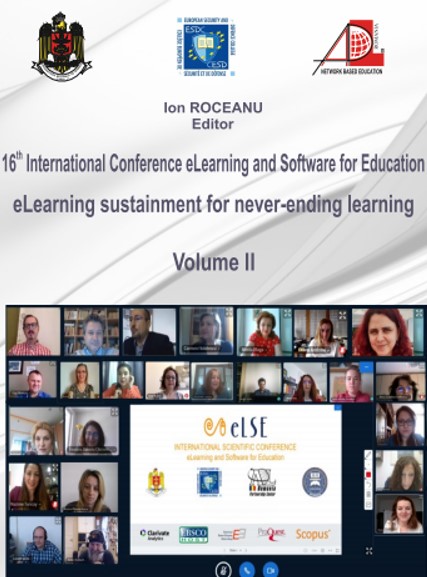TEACHING VISUAL AIDS PRESENTATIONS TO ADVANCED E_ENGINEERING STUDENTS - DEVELOPMENT VIA SELF-TEACHER MONITORING -
TEACHING VISUAL AIDS PRESENTATIONS TO ADVANCED E_ENGINEERING STUDENTS - DEVELOPMENT VIA SELF-TEACHER MONITORING -
Author(s): Doina Irina SimionSubject(s): Foreign languages learning, Higher Education , Distance learning / e-learning, Pedagogy
Published by: Carol I National Defence University Publishing House
Keywords: philosophy of action; routine; re-framing; self-monitoring; change; awareness;
Summary/Abstract: Teaching a foreign language to engineering students often poses an inherent challenge: bridging the gap between a mindset defined by technical skills to a mindset that becomes conversant with soft skills. A learner centred approach to language teaching provides the opportunity of training many of the key soft skills required on the work market: leadership (decision making), teamwork (peer interaction), communication skill (adapting style to audience), problem solving skills (info gap activities), work ethic (pro/con), flexibility/adaptability, interpersonal skills (language functions). As far as the student is concerned, the skill of delivering a power point based oral presentation that features the mandatory task of including any sort of visual aid (graph, flow chart, table etc.) presentation is an extremely useful object for acquiring communication skills due to its transferrable value. As far as the teacher is concerned, the repetitive edge of a teacher’s activity offers the possibility of juggling with a range of approaches to teaching the graph presentation skill and make place for improvement. Nevertheless, repetition in a teacher’s current work is a double edged challenge. On the one side, it is an accepted part of the mechanism of routine development, a state which pertains to the very process of attaining professional excellence. On the other hand, after attaining a certain plateau level in the outcome of repeated behavior, materials or methodology, the challenge comes from the need of a breakthrough: faster, deeper, more relevant. Although there is no universal recipe for achieving a breakthrough, one of the conditions that may lead to it is the ability of re-structuring, concept usefully developed by Michael Polanyi. This capacity building workshop is meant to explore some of the stages one might face in this attempt of restructuring. The case in point is the experience of teaching the skills needed in visual/electronic aid supported oral presentations to e-profile (electric/electronic/power) engineering students from the Bucharest Polytechnic School.
Journal: Conference proceedings of »eLearning and Software for Education« (eLSE)
- Issue Year: 16/2020
- Issue No: 02
- Page Range: 483-487
- Page Count: 5
- Language: English

